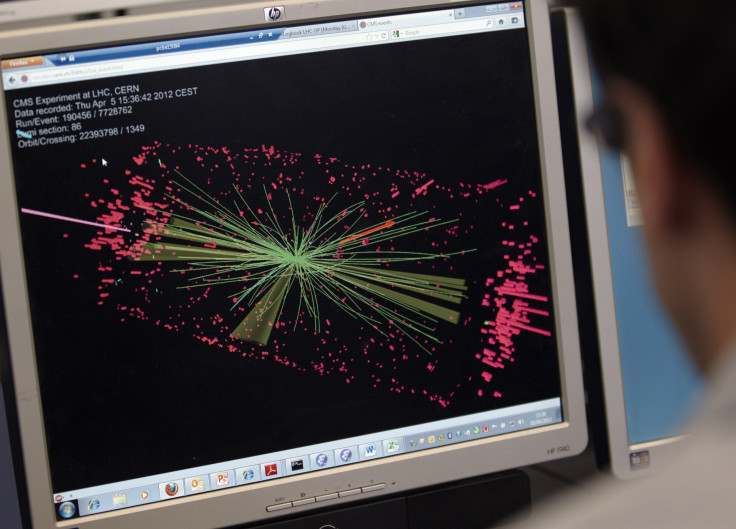Large Hadron Collider Detects Extremely Rare Particle Decay Predicted By Standard Model

Scientists analyzing data gathered during proton beam collisions carried out at CERN’s Large Hadron Collider (LHC) in 2011 and 2012 have made a discovery that further bolsters the Standard Model of physics, which allows us to comprehend the mind-bending reality of the quantum world. According to a paper published in the journal Nature on Wednesday, researchers have, for the first time ever, seen a strange B meson decay into a pair of muon particles.
Mesons are highly unstable subatomic particles that quickly decay into much lighter particles. The Standard Model states that in very rare instances -- about four times out of a billion decays -- the strange B mesons, which are a subcategory of mesons, decay into a pair of muons -- elementary particles that exist for a fraction of a second and are similar to electrons.
The findings are based on the combined results of two previous CERN experiments carried out separately by the LHCb and CMS teams at CERN. While evidence for the decay of B mesons had been detected individually by each team, researchers were only able to observe it at the needed statistical precision when they combined their databases.
“It is testament to the excellent performance of the LHC, and the sensitivity of our experiments, that we have been finally able to observe this extremely rare but important decay,” Guy Wilkinson, spokesman for the LHCb team involved in the analysis, said, in a statement.
The discovery attests to the remarkable predictive power of the Standard Model, providing further evidence for a theory that, despite its success, still has many flaws.
In 2012, with the discovery of the Higgs boson, which is responsible for imparting mass to all other particles, scientists believed the last missing piece that completed the Standard Model had been found. However, as they have now come to realize, even the completed version of this theory fails to incorporate gravity and explain the origin and preponderance of dark matter in the universe.
This is where the hunt for evidence of “supersymmetry,” which predicts the existence of more massive “super partners” for every known particle, assumes special importance for physicists looking to formulate an all-encompassing Grand Unified Theory -- a theory of the so-called “new physics” that unifies three of the four fundamental forces of nature in a single, elegant mathematical equation.
“For now, these rare decays have not revealed any hints of new physics,” CERN said, in the statement. However, given that the world’s most powerful particle accelerator has already begun low-energy collisions and is expected to resume operations at much higher energies in the coming months, the gaps in the theory might soon become more evident, ushering in an era of physics beyond the Standard Model.
“The search for new particles and the study of rare decays are complementary strategies for discovering new physics,” Tiziano Camporesi, spokesman for the CMS team involved in the analysis, said, in the statement. “The precision with which the experiments can measure these key decay rates will steadily improve, thus limiting the viable extensions to the Standard Model.”
© Copyright IBTimes 2025. All rights reserved.






















